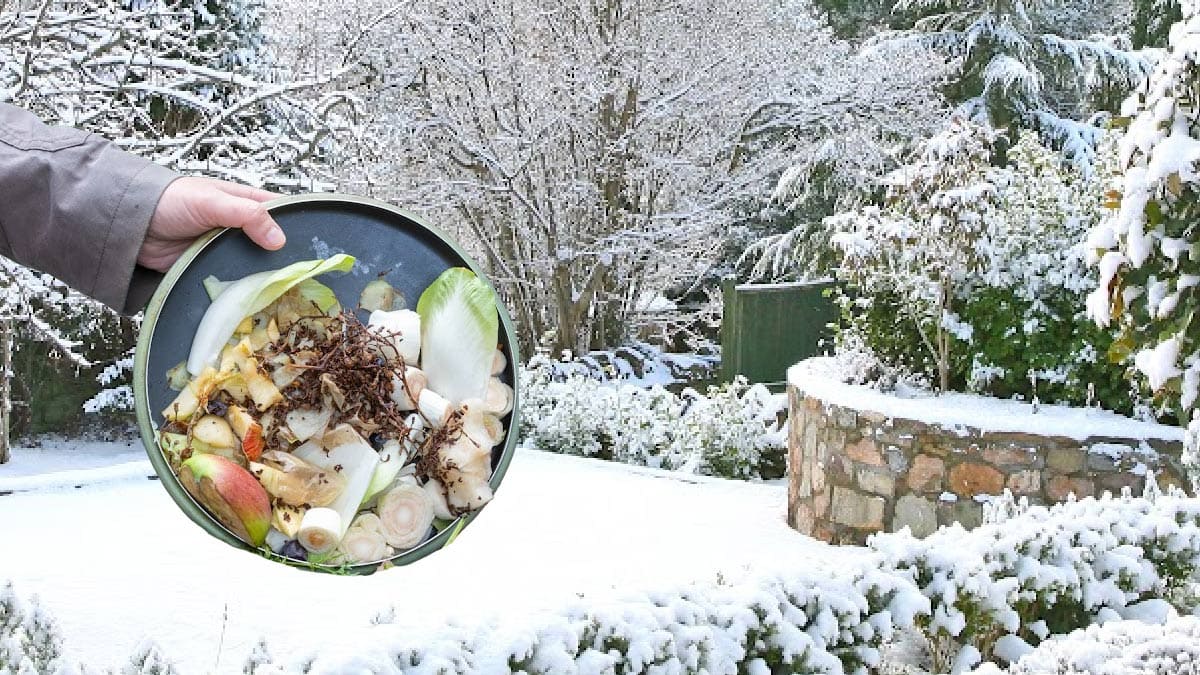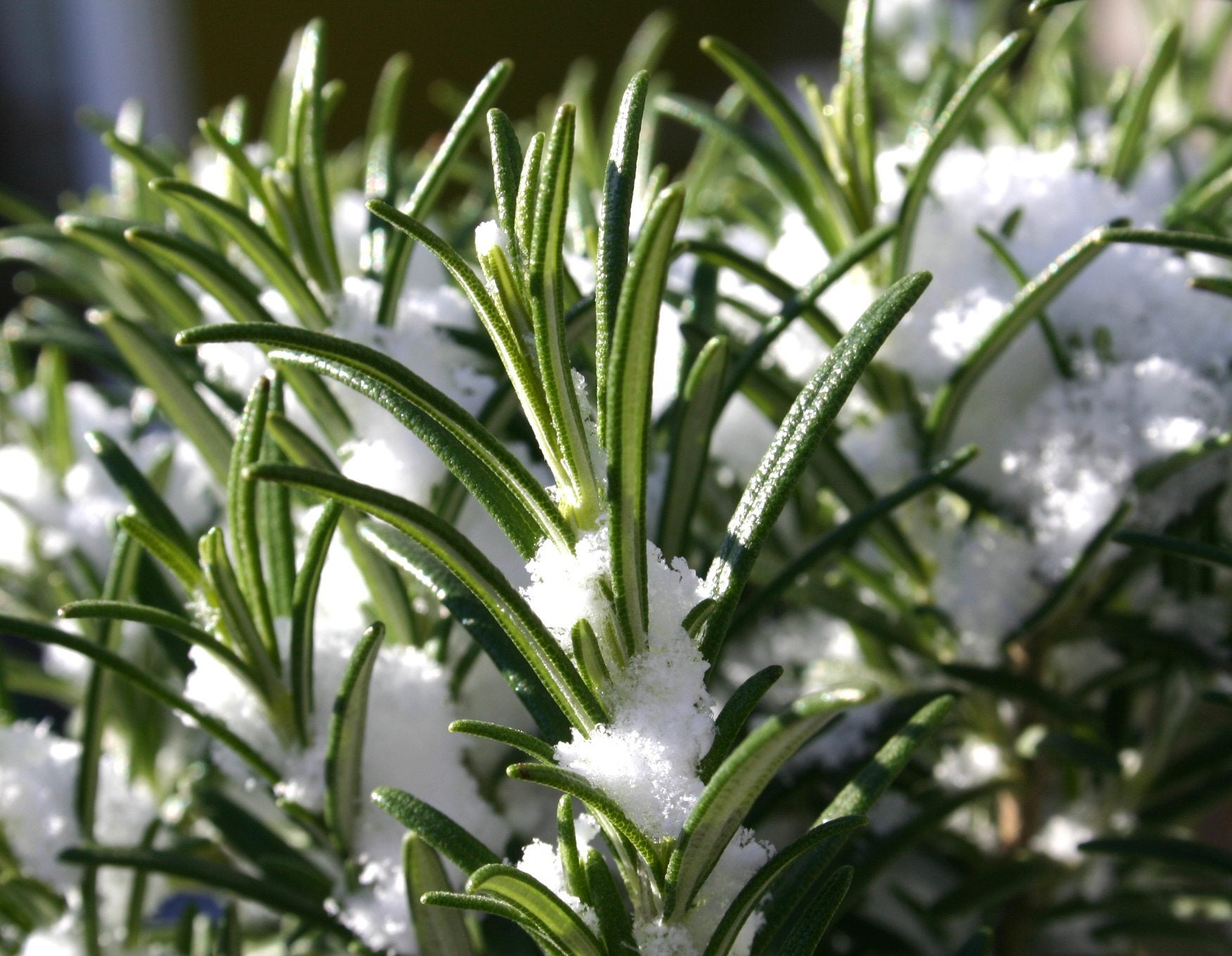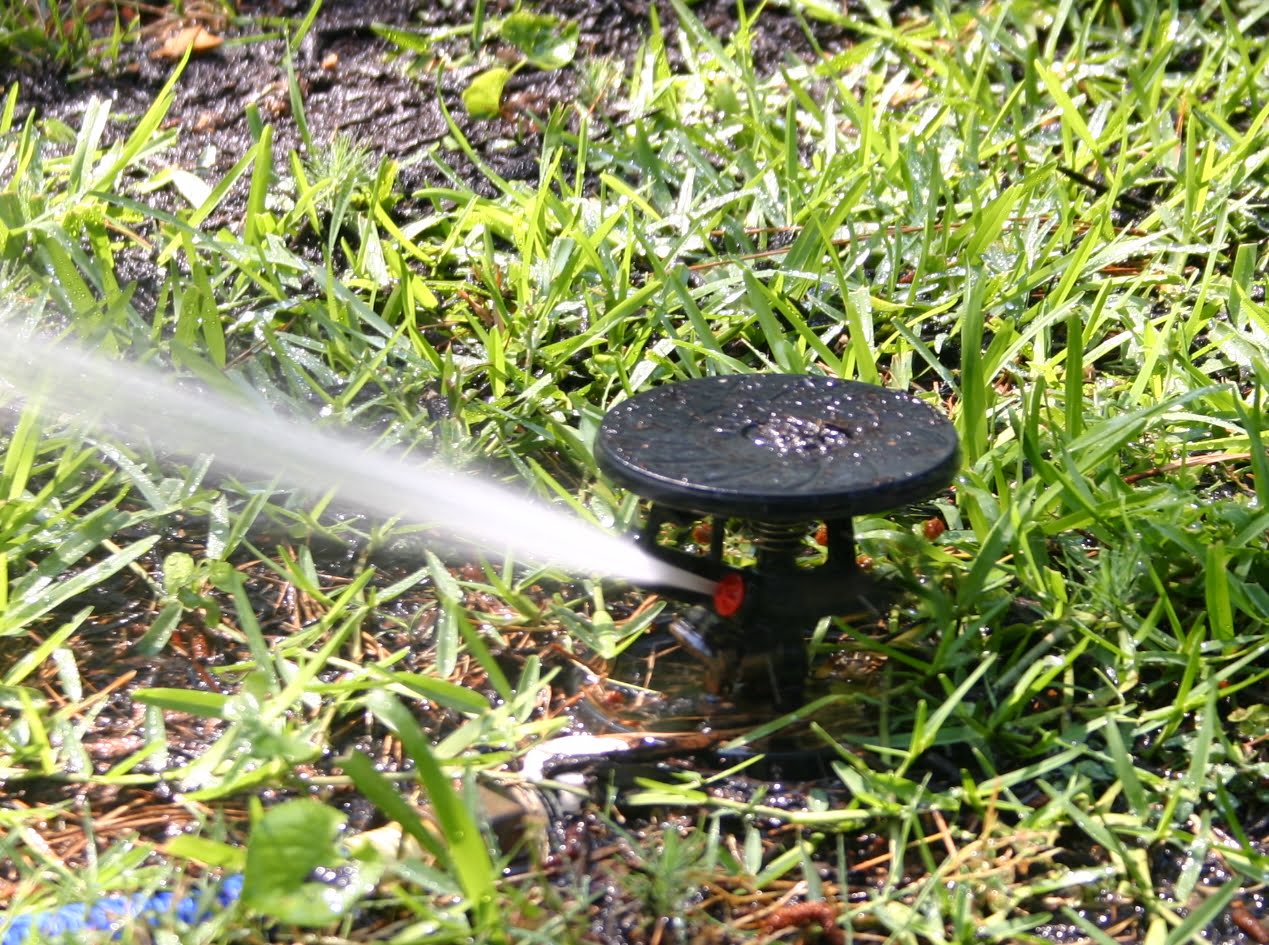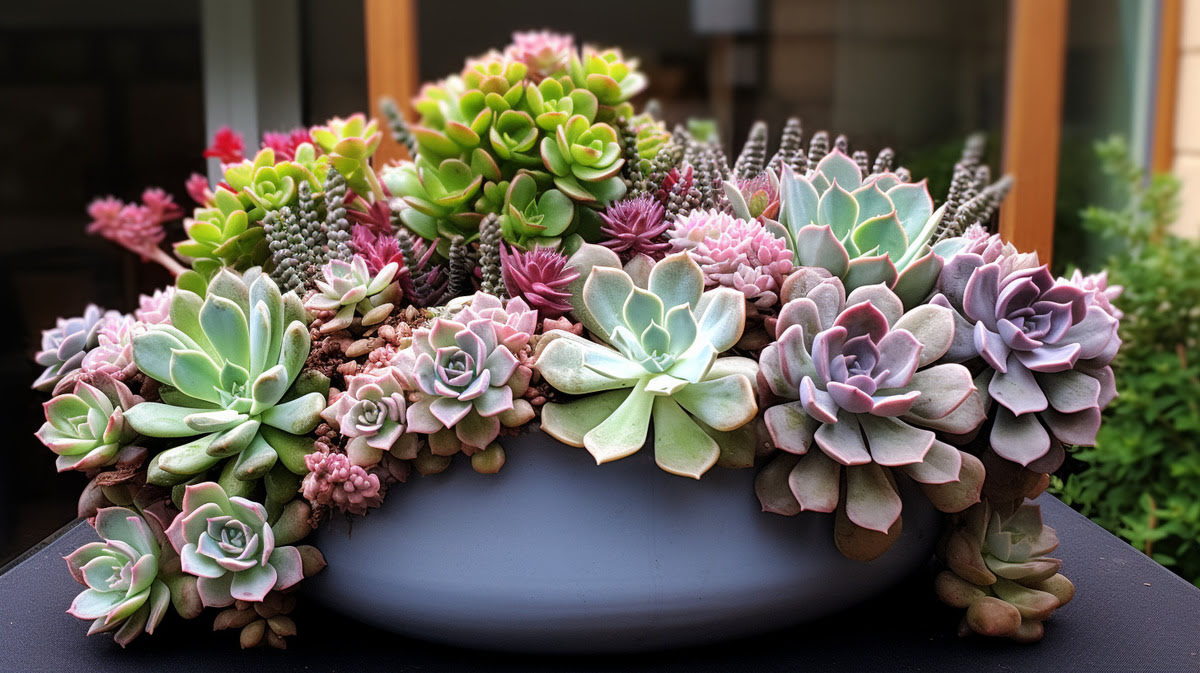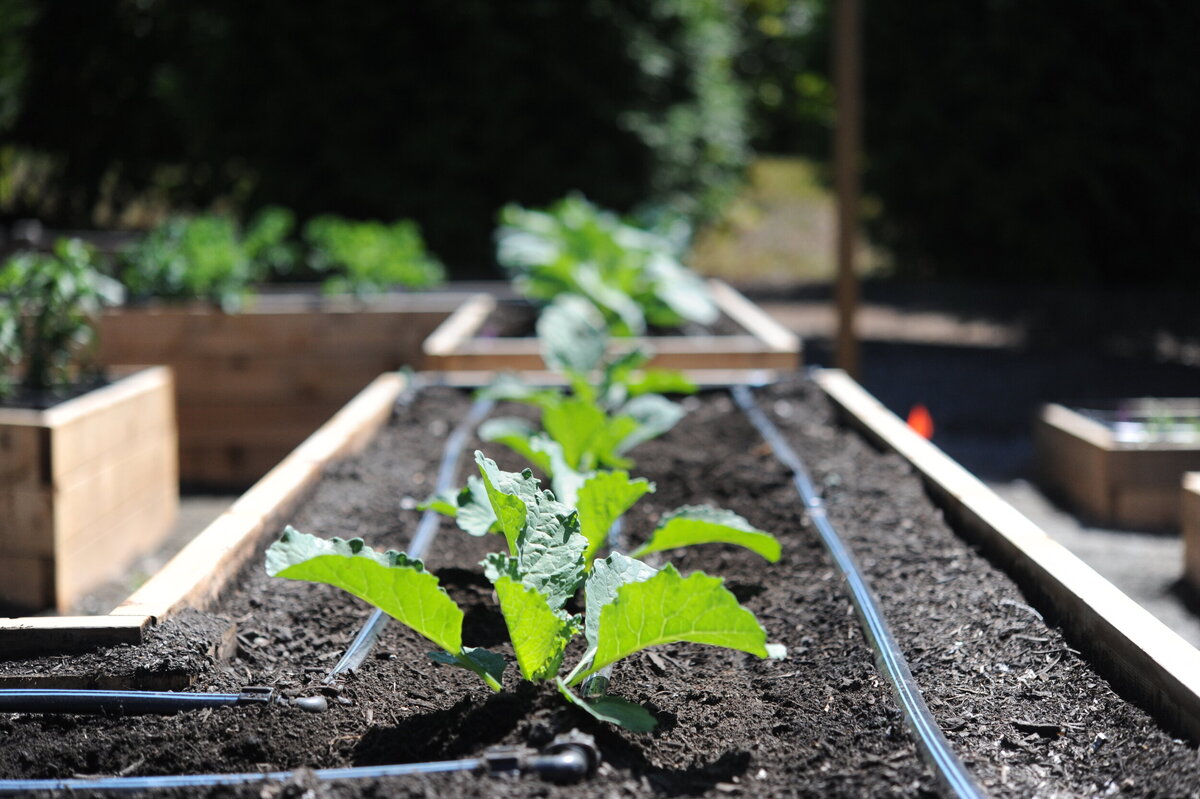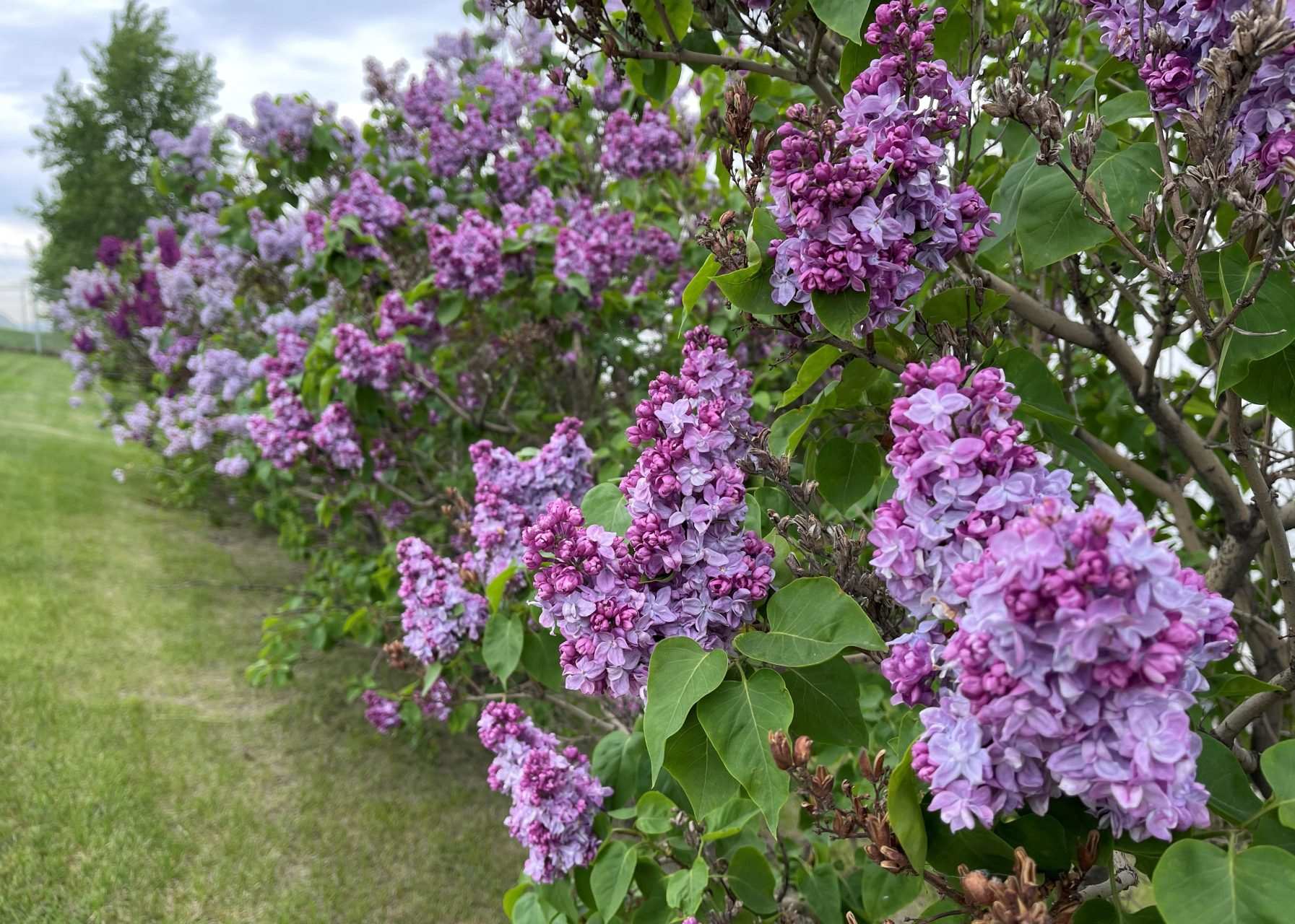Home>Gardening Techniques>How To Use A Greenhouse In Winter


Gardening Techniques
How To Use A Greenhouse In Winter
Modified: January 22, 2024
Learn how to effectively utilize a greenhouse for winter gardening with our expert tips on seasonal gardening. Grow your plants all year round with our greenhouse techniques!
(Many of the links in this article redirect to a specific reviewed product. Your purchase of these products through affiliate links helps to generate commission for Chicagolandgardening.com, at no extra cost. Learn more)
Table of Contents
- Introduction: Embrace the Winter Gardening Wonderland in Your Greenhouse
- Benefits of Using a Greenhouse in Winter
- Choosing the Right Greenhouse for Winter Use
- Preparing Your Greenhouse for Winter
- Heating Options for Your Winter Greenhouse
- Insulation Techniques to Maintain Heat
- Winter Planting Tips for Your Greenhouse
- Pest and Disease Control in a Winter Greenhouse
- Proper Ventilation in a Winter Greenhouse
- Taking Care of Your Greenhouse Equipment in Winter
- Conclusion: Embrace the Winter Gardening Adventure in Your Greenhouse
Introduction: Embrace the Winter Gardening Wonderland in Your Greenhouse
Welcome to the enchanting world of seasonal gardening! While most people may think that gardening is reserved for the warmer months, a greenhouse opens up a whole new realm of possibilities, allowing you to cultivate and nurture plants even in the depths of winter. With the right knowledge and techniques, you can create a thriving winter garden right in your own backyard.
A greenhouse provides a controlled environment that shields your plants from the harsh elements of winter, such as frost, freezing temperatures, and erratic weather conditions. It acts as a protective shield against these challenges, allowing you to create an optimal growing space where plants can flourish year-round.
Not only does gardening in a greenhouse during winter offer a plethora of benefits, but it also gives you the opportunity to extend your gardening season and explore a greater variety of plants. From vibrant winter blooms to fresh herbs and vegetables, there’s no end to what you can achieve in your winter greenhouse.
In this comprehensive guide, we will explore the many advantages of using a greenhouse in winter, guiding you through the process of choosing the right greenhouse, preparing it for winter, implementing effective heating and insulation techniques, and providing tips for successful winter planting. We’ll also discuss how to deal with common pest and disease issues, ensure proper ventilation, and take care of your greenhouse equipment to ensure its longevity.
So, if you’re ready to dive into the winter wonderland of seasonal gardening, let’s embark on this journey together. Embrace the magic of a winter greenhouse and unlock the potential to grow and enjoy the beauty of nature all year long.
Benefits of Using a Greenhouse in Winter
Using a greenhouse in winter opens up a world of possibilities for gardeners. It allows you to extend the growing season, protect plants from harsh weather conditions, and enjoy the beauty and productivity of a thriving garden even when it’s cold outside. Let’s explore some of the key benefits of utilizing a greenhouse during the winter months:
- Protection from frost and freezing temperatures: One of the main advantages of a greenhouse is that it provides a sheltered environment where plants are shielded from frost and freezing temperatures. This protection allows you to grow delicate and sensitive plants that would otherwise perish in the cold.
- Extended growing season: With a greenhouse, you can start planting earlier in the spring and continue growing well into the fall. By creating a stable and controlled environment, you can provide your plants with the ideal conditions for growth, substantially lengthening your gardening season.
- Increased plant variety: A greenhouse gives you the opportunity to experiment with a wider range of plants, including those that are not suited for your local climate. You can grow tropical plants, exotic fruits, and even certain vegetables and herbs that thrive in warmer conditions.
- Higher yield and productivity: By protecting your plants from the cold, wind, and other weather-related stressors, a greenhouse provides optimal growing conditions. This leads to healthier and more vigorous plants, resulting in increased yields and a more productive garden.
- More control over growing conditions: A greenhouse allows you to have greater control over the environment in which your plants grow. You can regulate the temperature, humidity, and light levels, creating an ideal habitat for your plants’ specific needs. This control helps prevent pest and disease infestations and ensures optimum growth.
- Opportunity to grow out-of-season crops: With a greenhouse, you can grow crops that are typically associated with warmer seasons. This means you can enjoy fresh produce throughout the winter, providing a continuous supply of nutritious and flavorful fruits, vegetables, and herbs.
These are just a few of the many benefits that a greenhouse offers for winter gardening. Whether you’re a seasoned gardener or just starting out, a greenhouse provides the perfect setting to explore your passion for plants and take your gardening skills to new heights.
Choosing the Right Greenhouse for Winter Use
Choosing the right greenhouse is essential for successful winter gardening. When selecting a greenhouse for winter use, there are several factors to consider to ensure optimal growing conditions and efficient maintenance. Here are some key points to keep in mind:
- Size and Space: Consider the amount of space you have available in your garden and the size of the greenhouse that will fit comfortably. Ensure that the greenhouse is large enough to accommodate the plants you intend to grow during winter while allowing space for pathways and other required equipment.
- Material: Greenhouses can be made from different materials, such as glass, polycarbonate, or polyethylene. Each has its pros and cons. Glass is more durable and provides excellent light transmission but may require extra insulation. Polycarbonate is lightweight and has good insulation properties, while polyethylene is affordable but may require more frequent replacement.
- Insulation: Look for a greenhouse that offers good insulation properties. This will help maintain a stable and favorable temperature inside, reducing heating costs and providing a suitable environment for winter plants. Features like double-wall construction and insulated panels can help improve insulation.
- Strength and Durability: Opt for a greenhouse with a sturdy frame that can withstand strong winds, heavy snow, and other winter weather conditions. Consider materials like aluminum or galvanized steel for durability. Reinforced glazing and proper bracing will also contribute to the strength of the structure.
- Ventilation: Adequate ventilation is crucial in a winter greenhouse to prevent excessive moisture buildup and maintain good air circulation. Look for a greenhouse with adjustable roof vents, side vents, or automatic ventilation systems to regulate temperature and humidity levels effectively.
- Accessibility and Maintenance: Ensure that your greenhouse provides easy access for maintenance tasks such as cleaning, watering, and plant care. Consider features like wide doors, proper drainage systems, and convenient access points for power supply and water sources.
Remember to consider your budget, local climate conditions, and personal preferences when choosing a greenhouse. It’s also helpful to consult with experienced gardeners or greenhouse specialists for recommendations and advice tailored to your specific needs.
By selecting the right greenhouse, you’ll create a sturdy and efficient structure that will serve as the foundation for your winter gardening endeavors. It’s an investment that will pay off with successful and enjoyable gardening experiences throughout the winter months.
Preparing Your Greenhouse for Winter
Preparing your greenhouse for winter is essential to ensure a suitable environment for your plants and protect them from the harsh weather conditions. Proper preparation will help you maintain consistent temperatures, prevent heat loss, and promote healthy plant growth. Here are some key steps to consider when getting your greenhouse ready for winter:
- Clean and sanitize: Start by removing any debris, fallen leaves, and dead plants from your greenhouse. Thoroughly clean all surfaces, including the floor, walls, and benches. Sanitize the greenhouse with a mild bleach solution to eliminate any pests or diseases that may linger.
- Inspect and repair: Carefully inspect the greenhouse structure for any damage or wear. Check the glazing for cracks or gaps and repair or replace damaged panels. Ensure that the doors and windows close properly and that the seals are intact to prevent drafts.
- Organize and declutter: Clear out any unnecessary items or overgrown plants that may hinder proper airflow and light distribution. Organize your benches and shelving, optimizing the space for winter plantings.
- Install insulation: Adding insulation to your greenhouse is crucial for winter gardening. Use materials such as bubble wrap, shade cloth, or insulating panels to cover the walls and roof. This will help retain heat and reduce heat loss during cold nights.
- Provide adequate heating: Depending on your climate, you may need to provide supplemental heating in your greenhouse. Install a reliable and efficient heating system that can maintain the desired temperature range for your plants. Options include electric heaters, gas heaters, or radiant heating systems.
- Create a thermal barrier: Consider adding a layer of thermal barrier material, such as horticultural fleece or straw, on the greenhouse floor. This helps to insulate the soil and provide additional protection against cold temperatures.
- Monitor and regulate humidity: Winter air tends to be drier, so monitor and regulate humidity levels in your greenhouse. Use a humidifier or misting system to maintain adequate moisture for your plants. Be cautious of overwatering, as excess moisture can lead to fungal diseases.
- Use frost protection: Invest in frost protection measures, such as frost blankets, floating row covers, or heat lamps, to shield your plants during extremely cold nights. These protective coverings will help prevent frost damage and maintain a stable microclimate.
By taking the time to prepare your greenhouse for winter, you’ll create a nurturing environment that supports plant growth and safeguards your garden against the challenging winter elements. With proper preparation, your greenhouse will become a sanctuary where plants can thrive, no matter how chilly it is outside.
Heating Options for Your Winter Greenhouse
Choosing the right heating options for your winter greenhouse is crucial to maintain optimal temperature conditions for your plants. By providing adequate heat, you’ll ensure the survival and growth of your winter plants. Here are some heating options to consider:
- Electric Heaters: Electric heaters are a popular choice for smaller greenhouses. They come in a range of sizes and styles, including fan heaters, radiant heaters, and oil-filled heaters. Electric heaters are relatively easy to install and provide consistent heat distribution.
- Gas Heaters: Gas heaters, powered by propane or natural gas, are suitable for larger greenhouses. They offer a cost-effective heating solution and can produce a significant amount of heat. However, proper ventilation and carbon monoxide monitoring are crucial with gas heaters to ensure safety.
- Wood or Pellet Stoves: Wood or pellet stoves provide a traditional and cozy heating option for larger greenhouses. They are efficient and can generate a substantial amount of heat. However, proper ventilation, fire safety measures, and regular maintenance are essential when using these heating sources.
- Radiant Heating: Radiant heating systems, such as radiant floor heating or ceiling-mounted radiant panels, emit heat directly to objects in the greenhouse, including plants and benches. This type of heating ensures efficient energy usage and even heat distribution.
- Heat Exchange Systems: Heat exchange systems, also known as geothermal or ground-source heat pumps, use the stable temperature of the ground to heat the greenhouse. These systems are energy-efficient and provide consistent heating throughout the winter.
- Insulated Hot Water Pipes: Insulated hot water pipes can be installed throughout the greenhouse, providing a continuous flow of warm water to radiators or heat exchangers. This method distributes heat evenly and effectively warms the entire space.
When selecting a heating option for your greenhouse, consider factors such as greenhouse size, local climate conditions, heating requirements, and your budget. It’s essential to choose a heating system that can maintain the desired temperature range for your plants while being energy-efficient and safe to use. Consulting with a greenhouse specialist can help you determine the most suitable heating option for your specific needs.
Remember to monitor the temperature regularly and adjust the heating accordingly to ensure your plants remain in their optimal growing conditions. By providing the right amount of heat, your winter greenhouse will be a haven for thriving plants, even in the coldest months.
Insulation Techniques to Maintain Heat
Proper insulation is crucial for maintaining heat in your winter greenhouse. Insulating your greenhouse effectively will help create a stable environment, reduce heat loss, and promote optimal plant growth. Here are some insulation techniques to consider:
- Double Glazing: Install double-glazed or insulated glass panels for better heat retention. Double glazing provides an extra layer of insulation, reducing heat loss through the glazing and keeping the greenhouse warmer during cold spells.
- Bubble Wrap: Covering the greenhouse walls and roof with bubble wrap is a cost-effective DIY insulation method. The bubble wrap traps air and acts as an insulating layer, helping to reduce heat loss. Attach it securely to the frame using clips or tape, ensuring that it covers all the glazing surfaces.
- Insulated Panels: Consider using insulated panels made from materials such as polystyrene or polyurethane foam. These panels provide excellent insulation properties and can be installed on the walls and roof of the greenhouse.
- Shade Cloth: During winter, shading materials, such as shade cloth or horticultural fleece, can help reduce heat loss by trapping warm air inside the greenhouse. Install the shade cloth on the roof and sides of the greenhouse to provide an additional layer of insulation.
- Sealing Drafts: Inspect the greenhouse for any gaps, cracks, or drafts that can allow cold air to enter or warm air to escape. Seal these areas using weatherstripping, sealant, or caulk to create a tight seal and prevent heat loss.
- Thermal Mass: Incorporate thermal mass elements, such as containers filled with water or stone, inside your greenhouse. These materials absorb heat during the day and release it slowly during the cooler nights, helping to regulate temperature fluctuations.
- Insulating Flooring: If your greenhouse has a concrete or bare earth floor, insulate it to prevent heat loss. Add a layer of insulation material, such as foam board or thick mulch, to the floor surface. This will help minimize heat transfer from the ground and maintain a warmer environment.
- Close Off Unused Areas: If you have a larger greenhouse, consider closing off unused sections during winter. This will reduce the overall volume of space that needs to be heated, making it more energy-efficient and easier to maintain a consistent temperature.
It’s important to regularly assess the effectiveness of your greenhouse insulation and make adjustments as needed. Monitor the temperature inside the greenhouse and make improvements or add extra insulation layers if necessary. With proper insulation techniques, you can create a cozy and energy-efficient environment that protects your plants from the cold and ensures their healthy growth throughout the winter season.
Winter Planting Tips for Your Greenhouse
Winter is an excellent time to experiment with a variety of plants in your greenhouse. With the right approach, you can enjoy a flourishing garden even when the temperatures drop outside. Here are some winter planting tips to maximize your greenhouse’s potential:
- Choose Cold-tolerant Plants: Select plants that are suitable for winter growing. Look for cold-tolerant varieties of vegetables, herbs, and flowers that can withstand lower temperatures and shorter daylight hours. Some popular options include kale, spinach, Swiss chard, arugula, lettuce, winter herbs like rosemary and thyme, and cool-season flowers like pansies and violas.
- Start Seeds Indoors: Begin sowing seeds indoors in late winter or early spring to get a head start on the growing season. Use seed trays or small pots with a good quality seed-starting mix. Place them in a warm area of your greenhouse or on a heated propagator to encourage germination.
- Consider Crop Rotation: Practice crop rotation to prevent the buildup of pests and diseases. Avoid planting the same type of crops in the same location year after year. Rotate your plantings to different areas of the greenhouse to maintain soil health and minimize the risk of soil-borne issues.
- Provide Sufficient Lighting: In winter, natural daylight is limited. Supplemental lighting is crucial to ensure the healthy growth of your plants. Use grow lights to provide the necessary light intensity and duration for optimal growth. Position the lights at the appropriate height for different plant stages and adjust the light cycle to mimic natural daylight.
- Monitor Temperature and Humidity: Regularly monitor the temperature and humidity levels in your greenhouse. Different plants have varying heat and humidity requirements, so strive to provide the ideal conditions for each. Use a hygrometer and thermometer to keep track of these factors and adjust them as needed to avoid stress or damage to your plants.
- Water Carefully: Be mindful of watering your plants during winter. Although plants may require less water due to slower growth, it’s essential to check soil moisture regularly. Water when the top inch of soil feels dry, making sure not to overwater as this can lead to root rot. Use room-temperature water to avoid shocking your plants.
- Protect from Frost: Use frost protection measures such as frost blankets, cloches, or row covers to safeguard your plants from sudden drops in temperature. Covering them overnight when temperatures are expected to dip below freezing can help prevent frost damage.
- Maintain Proper Ventilation: Adequate ventilation is crucial in a greenhouse, even during winter. Proper airflow helps control temperature, humidity, and prevents the buildup of excess moisture and fungal diseases. Open vents or use fans to promote air circulation, especially during milder days.
By following these winter planting tips, you can make the most of your greenhouse during the colder months. Experiment with different plant varieties, stay attentive to their needs, and enjoy the rewards of a vibrant and thriving winter garden.
Pest and Disease Control in a Winter Greenhouse
While a greenhouse provides a protected environment for your plants, it’s essential to be vigilant about pest and disease control, especially during the winter months. The controlled conditions and proximity of plants can create an ideal environment for pests and diseases to thrive. Here are some tips to keep your winter greenhouse free from these common issues:
- Monitor Regularly: Conduct regular inspections of your plants to identify any signs of pests or diseases. Look for symptoms such as yellowing leaves, wilting, spots, discoloration, or visible insects. Early detection is key to preventing infestations from spreading.
- Practice Good Sanitation: Maintain cleanliness in your greenhouse by removing fallen leaves, dead plant material, and debris regularly. Pests and diseases often thrive in decaying plant matter, so eliminating these potential breeding grounds will reduce their presence.
- Isolate Infected Plants: If you discover any infected or infested plants, isolate them immediately to prevent the spread of pests or diseases to healthy plants. Remove the affected plants and dispose of them properly, either by burning or sealing them in bags before disposal.
- Natural Predators: Encourage natural predators like ladybugs, lacewings, and predatory nematodes to control pests in your greenhouse. You can introduce these beneficial insects and organisms to help naturally keep pest populations in check.
- Biological Controls: Implement biological controls like the use of parasitic wasps or beneficial nematodes specifically targeted to combat common greenhouse pests. These biological solutions can effectively control pests without the use of harmful chemicals.
- Integrated Pest Management (IPM): Adopt an integrated pest management approach, utilizing a combination of strategies to control pests. This includes cultural practices, physical barriers, biological controls, and only resorting to chemical pesticides as a last resort.
- Quarantine New Plants: Before introducing new plants into your greenhouse, quarantine them for a period of time. This allows you to closely monitor them for any signs of pests or diseases before they potentially spread to your established plants.
- Avoid Overcrowding: Proper plant spacing is crucial in preventing the spread of diseases in a greenhouse. Overcrowding can create a more favorable environment for pests and diseases to flourish. Provide adequate airflow by spacing plants appropriately and avoid overcrowding your greenhouse.
- Clean Tools and Equipment: Regularly clean and sanitize your gardening tools and equipment to prevent the transfer of pests and diseases between plants. Disinfecting tools with a bleach solution or alcohol can help eliminate potential pathogens.
By implementing these pest and disease control strategies, you can maintain a healthy and thriving winter greenhouse. Regular monitoring, proper sanitation, and employing natural and biological controls will help prevent pests and diseases from disrupting your garden and ensure the success of your winter plantings.
Proper Ventilation in a Winter Greenhouse
Proper ventilation is crucial for a healthy winter greenhouse environment. While it may seem counterintuitive to let cold air in, ensuring adequate airflow is necessary to maintain optimum temperature, humidity levels, and prevent the buildup of excess moisture. Here are some tips to achieve proper ventilation in your winter greenhouse:
- Open Vents or Windows: On mild days or when the greenhouse temperature rises, open vents or windows to allow fresh air to circulate. This will help regulate temperature and humidity levels, preventing stagnation and excess moisture buildup.
- Use Ventilation Fans: Install ventilation fans to improve air circulation inside the greenhouse. Fans help distribute heat evenly and prevent the development of stagnant pockets of air. Position the fans strategically to ensure proper airflow, especially near plants that require good ventilation.
- Install Louvered Windows: Louvered windows are designed to allow air to flow in and out of the greenhouse while keeping out pests and harsh weather. They provide controlled ventilation and can be adjusted based on weather conditions and plant requirements.
- Consider Ridge Ventilation: Ridge vents are an effective way to provide natural ventilation in a greenhouse. They are installed along the ridge of the greenhouse roof, allowing warm air to escape and cool air to enter. Ridge vents are ideal for releasing excess heat during sunny winter days.
- Use Automatic Vent Openers: Utilize automatic vent openers that respond to temperature changes. These devices will open and close the vents as needed, maintaining a consistent temperature inside the greenhouse without constant manual adjustment.
- Use Shade Cloth: In sunny winter days, shading your greenhouse with shade cloth can help regulate temperature and prevent overheating. This reduces the need for excessive ventilation while still providing a comfortable environment for your plants.
- Monitor Humidity Levels: High humidity levels can lead to excess moisture buildup, increasing the risk of fungal diseases. Use a hygrometer to monitor humidity levels inside the greenhouse and adjust ventilation accordingly. Open vents or use dehumidifiers to maintain an optimal humidity range.
- Position Ventilation Openings Strategically: Place ventilation openings near the ground to allow for better air exchange. Cold air tends to settle at lower levels, so having openings at the bottom will facilitate the circulation of fresh air and prevent stagnant pockets of cold air from forming.
- Implement Insect Screens: Install insect screens on vents and windows to prevent pests from entering the greenhouse while still allowing for proper air exchange. Insect screens are essential for maintaining good ventilation without compromising plant health.
By ensuring proper ventilation in your winter greenhouse, you create a healthier and more favorable environment for your plants. A well-ventilated greenhouse helps regulate temperature, humidity, and prevents issues like mold, fungal diseases, and pest infestations. With the right combination of airflow and control, your plants can thrive throughout the winter season.
Taking Care of Your Greenhouse Equipment in Winter
Taking care of your greenhouse equipment during winter is essential to ensure the longevity and functionality of your tools and machinery. Proper maintenance and storage practices will help protect your equipment from damage caused by the colder temperatures and harsh weather conditions. Here are some tips for taking care of your greenhouse equipment in winter:
- Clean and Sanitize: Before winter sets in, thoroughly clean and sanitize your equipment. Remove any dirt, debris, or plant residue that may have accumulated. Use a mild detergent and water to clean surfaces, and disinfect tools with a bleach solution to prevent the spread of diseases.
- Inspect for Damage: Inspect all your equipment, including tools, pots, trays, and shelving, for any signs of damage or wear. Replace or repair any damaged or faulty items before storing them for winter. This will ensure they are in good working condition when you need them again.
- Drain and Disconnect Water Sources: If you have irrigation or watering systems in your greenhouse, make sure to drain and disconnect the water sources before winter. This prevents water from freezing and damaging the equipment. Remove and clean any filters or nozzles to prevent clogging.
- Check and Maintain Heating Equipment: Inspect and maintain your heating equipment, such as heaters or heat mats, before winter. Remove any dust or debris that may have accumulated and ensure proper functioning. Clean or replace filters if necessary and store spare parts in a dry and accessible location.
- Protect Sensitive Equipment: If you have sensitive equipment, such as pH meters or thermometers, remove them from the greenhouse during winter. Extreme temperatures can affect their accuracy and lifespan. Store them in a dry and temperature-controlled area until spring.
- Organize and Store Properly: Proper storage is crucial for protecting your greenhouse equipment. Clean and organize your tools, ensuring they are dry before storing them in a designated area. Hang or store smaller tools on racks or pegboards, and stack pots and trays neatly to save space.
- Maintain Proper Lubrication: Apply lubricant to moving parts of equipment such as pruning shears, wheelbarrows, or hinges to prevent rust and ensure smooth operation. Lubricate as per the manufacturer’s recommendations and store equipment in a dry area to avoid moisture damage.
- Protect Electrical Equipment: If you have electrical equipment in your greenhouse, ensure that it is protected from moisture and temperature fluctuations. Use waterproof covers or cases for any electrical components, extension cords, or timers.
- Keep an Inventory: Maintain a detailed inventory of your greenhouse equipment. This will help you keep track of items, identify any missing or damaged equipment, and plan for future purchases or replacements.
By following these tips, you can properly care for and maintain your greenhouse equipment during the winter months. This will extend the lifespan of your tools, ensure their functionality when you need them, and save you the hassle of having to replace or repair equipment before the next gardening season.
Conclusion: Embrace the Winter Gardening Adventure in Your Greenhouse
As we wrap up this comprehensive guide to seasonal gardening in your greenhouse, it’s clear that the winter months offer a unique opportunity to explore new horizons in your gardening journey. By utilizing a greenhouse, you can extend your growing season, protect your plants from the harsh winter conditions, and enjoy the beauty and productivity of a thriving garden, even when snow blankets the ground outside.
From selecting the right greenhouse and preparing it for winter, to implementing effective heating and insulation techniques, and understanding the best practices for winter planting, pest control, ventilation, and equipment maintenance, you’ve gained valuable knowledge to excel in winter gardening.
Remember, winter gardening in a greenhouse is not without its challenges. However, armed with the right techniques and a touch of creativity, you can transform your greenhouse into a winter wonderland, bursting with vibrant blooms, fresh produce, and aromatic herbs.
Embrace the magic of a winter greenhouse, experiment with cold-tolerant plants, and enjoy the taste of freshly harvested vegetables during the colder months. Create a nurturing environment where plants can thrive and provide solace and beauty during the often-dreary winter season.
Now that you understand the benefits of using a greenhouse in winter, the importance of proper insulation and ventilation, and the steps necessary to care for your equipment, you are well on your way to becoming a successful winter gardener.
So, why wait? Embrace the winter gardening adventure in your greenhouse and let nature’s wonders inspire you throughout the year. With patience, dedication, and a love for plants, you are bound to create a year-round oasis of greenery and joy.
